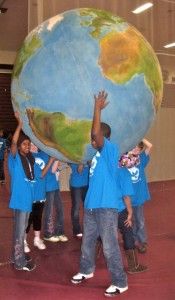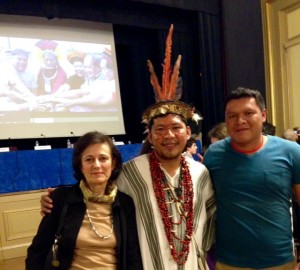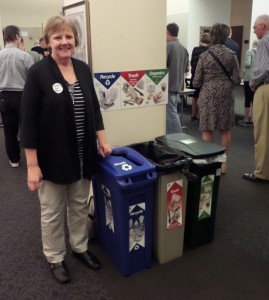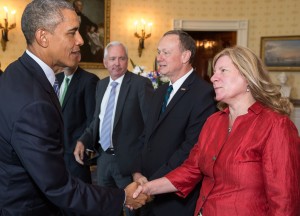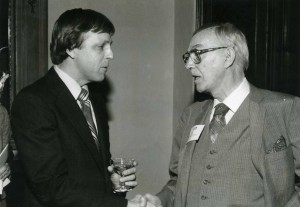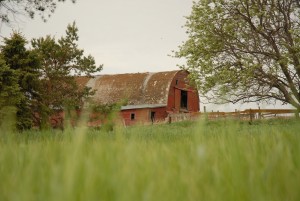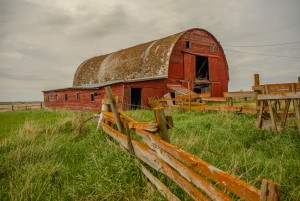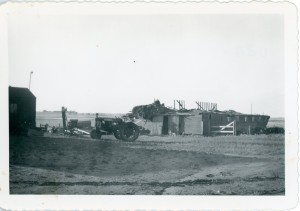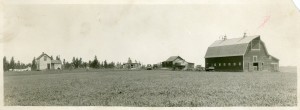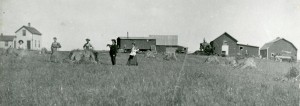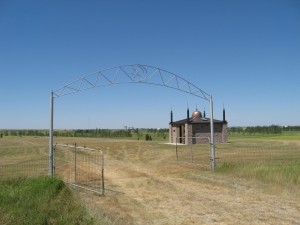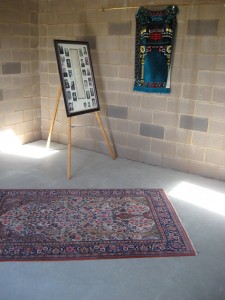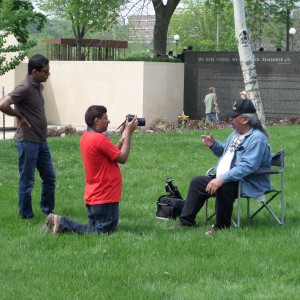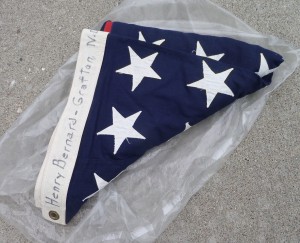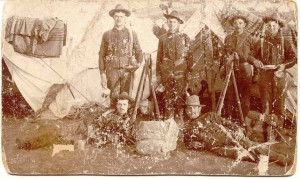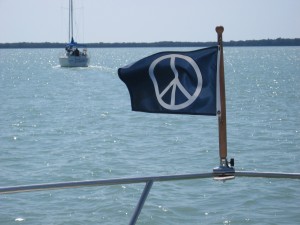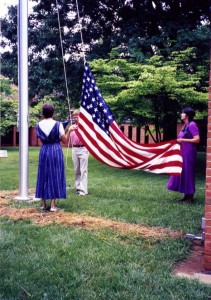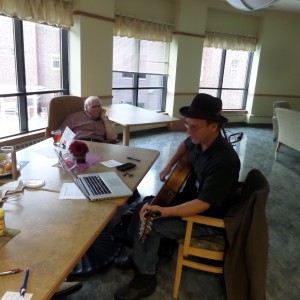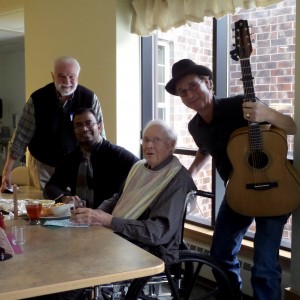#1093 – Dick Bernard: "Let there be Peace on Earth, and let it begin with me"
This space goes dark for the next 2 1/2 weeks as we take a long awaited vacation trip. An early wish for a great Christmas season, and Happy 2016.
My most uplifting find recently has been “Let there be Peace on Earth”, sung Sep 5, 2015, for Pope Francis and many other religious leaders at the World Trade Center Memorial in New York City. You can listen to it here (link in the first paragraph).
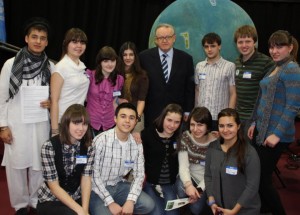
World Link Exchange Students with Nobel Peace Prize recipient and Elder Martti Ahtisaari Mar 5, 2010
Thirty eight years ago, I took my then 13 year old son to a brand new movie, “Star Wars”. More on that at the end of this post.
Today, the latest sequel of Star Wars opens in theatres, closely following the latest U.S. Republican Presidential candidate debate in Las Vegas; and less than a week after the Climate Change agreements in Paris, and on and on and on.
As this year ends, I raise a question for thought and discussion: who are we “Americans”, and how are we, and should we be, in the World of which we are part?
Over a year ago, April, 2014, I met Ehtasham Anwar, Pakistan native and civil administrator in one of Pakistan’s largest cities, who was ending a year as a Fulbright/Humphrey Scholar at the Human Rights Center of the University of Minnesota Law School. He made his statement to me, then, and more recently included it as part of a public post on Facebook (here).
The relevant quote: “Through the eyes of media, rightly or wrongly, I had always seen the United States as an aggressive country, a war monger nation, and the biggest obstacle to my dream of a dream world—a world free of hunger, disease and war.
I also believed the US citizens were too mired in their own worldly pursuits that they did not have time to attend to what the US government was doing elsewhere in the world in their name and with their tax money. They either endorsed or, at best, remained indifferent to the US aggression and highhandedness abroad. Their heart, if at all it was, did not beat for the humanity at large. They were thus equally to be blamed for the death and misery that their government brought to people in many parts of the world every now and then.
And then I got an opportunity to travel to the United States and live among, and interact with, the citizenry. Myths were shattered. Concepts were changed. I met some of the best persons in my life in the United States. They were as humane, if not more, as anyone else on the globe. Overwhelming majority disapproved war. They too felt disturbed over the US hegemonic designs. They too worked for the cause of peace. They too wanted a world full of happiness and joy, not only for them but for others too.
Where then was the disconnect? My confusion compounded. With so many good people, why was there no impact seen on the US policies? Was the church and the clergy playing its due role? Those who were working for peace failed to inspire their own families, how could they expect to impact the US policies? What were the obstacles? Way forward? Messages?
My quest led me to a journey—a journey through the hearts and minds of the common Americans. During my nearly a year-long stay in Minnesota, I talked to people from all cross sections of the society: those who had given their lives to the cause of peace; those who had taken part in, and personally seen the horrors of, the World War II and the Vietnam War; those who had participated in the civil rights movement; those who were well off; those who belonged to less privileged segments of the society; those who were the academicians, and had been keeping an eye on, peace and related issues all around the world; those who claimed to have belonged to the inner circles of the US security establishment; those who spoke from the pulpit; those who used arts as a weapon for peace; the men; the women; the young; the old; the rich; the poor; the white; the people of color.”
(Completely unintentionally, the previous three posts, Dec. 10 (Muslims), 12 (the old barn) and 14 (Paris Climate Talks), catch my feelings as this year nears an end: I see a base of hope on which we can build. But “hope” is not an easy word. It requires great effort to achieve the aspiration of hope.)
I observe that there are, essentially, two “worlds” in which the vast majority of we Americans live, every day. Ehtasham was correct in his observation.
The first world is our daily lives: who we see and interact with in all sorts of ways, from passive to active. This is our real world, for the most part an environment of peace, understanding, caring. Publicly, it is largely invisible, and not a place of constant violence or talk of war. It is the America Ehtasham saw when he spent a full year here, in 2013-14. I see this world each day; as do most Americans.
We are basically good people.
There is a much smaller, louder, extremely aggressive, artificial and negative world; a very aggressive place that inhabits the daily TV “news” of death and destruction, “reality” shows, advertising, and the often near-insane rhetoric of contemporary American politics. Daily we watch and read about the artificial “America”. Sadly, the recent “debates” speak to the most bitter portion of that relatively small alternate universe where fear, suspicion and respect only for war and dominance moves the agenda.
As citizens we cannot pretend that all we can do is to be a decent person in our own small circle. That is not enough.
We each must choose which of these worlds to be part of; and, importantly, whether or not we will work to change the public conversation. We cannot be detached.
As the old Native American story about ourselves as a wolf goes, we choose what to feed.
The best each of us can do is to, as Gandhi suggested, “be the change we wish to see in the world.” .

Lynn Elling, Sep 21, 2015, at Dedication of Minneapolis’ Open Book as a Peace Site, sponsored by Minnesota Peace and Social Justice Writers Group
A Look Back at “Star Wars”, the Spring of 1977
The spring of 1977 was a difficult one for me, personally.
A new movie was opening in the United States, called Star Wars, by a young filmmaker, George Lucas.
It sounded interesting, and I took my son to the film at the Northtown Theatre in Blaine MN. It was a super movie. I liked it; my son loved it. The rest of that summer he went to the film many times; it is one of the very few movies where I can still remember where I saw it.
Somewhere that summer I got a theater poster for the film, and Tom had it on the wall of his room. Later I kept it rolled up in a closet. In 1995, I had it mounted, and gave it to my son. He still has it.
In 1983, the Strategic Defense Initiative, called Star Wars, entered the geopolitical conversation. The words became useful for those whose livelihood depends on enemies.
In more recent years, one of my son-in-laws has made a couple of movies on a Star Wars theme. There are thousands of people who make similar production. David has done two; they were both well done.
Star Wars had and has a grip on us.
And everyone has their own interpretation.
As a Dad, that spring of 1977, I saw the movie as a simple good (Luke Skywalker) vs evil (Darth Vader) film. I might have seen one of the sequels to the original, and at some point I’ll see the version that opens today, and I’ll find it interesting, after the passage of 38 years.
I wonder what we’ve learned in the past 38 years.
Surely, there are vastly more sophisticated weapons of war; now among the fears is taking out space satellites that we all rely on for even basic communications. We do war remotely now, with drones, piloted from places half a world away.
Star Wars was a good movie.
It would be nice if Good prevailed, to be helpful to all….
Who is Evil?

